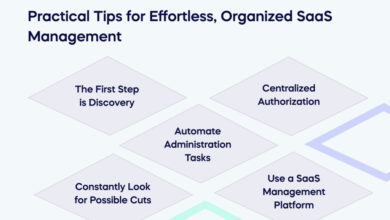
Healthcare Targeted by Cybercriminals
Healthcare is the preferred target of cyber attackers, making patient data and financial systems prime targets for malicious actors. These attacks can range from ransomware crippling vital services to data breaches exposing sensitive medical records. Understanding the motivations, vulnerabilities, and consequences of these attacks is crucial for safeguarding the future of healthcare and ensuring patient safety.
This article delves into the intricate world of cyber threats against healthcare, examining the motivations behind these attacks, the vulnerabilities exploited, and the far-reaching consequences. We will explore the strategies to bolster security, the role of regulations, and the global impact of this growing threat.
Motivations of Cyber Attacks on Healthcare: Healthcare Is The Preferred Target Of Cyber Attackers

The healthcare sector, a vital pillar of society, is increasingly becoming a prime target for cyberattacks. These attacks are not merely acts of malicious intent; they are often driven by a complex web of motivations, from financial gain to reputational damage and the desire to disrupt critical services. Understanding these motivations is crucial to developing effective defense strategies and mitigating the risks facing healthcare organizations.Financial incentives are a major driving force behind cyberattacks on healthcare.
Healthcare organizations often hold significant financial data, including patient billing information, insurance claims, and financial records. Gaining access to this data allows attackers to either directly steal funds or to use it for fraudulent activities. The financial ramifications of these attacks can be devastating for healthcare providers, leading to substantial losses and potentially jeopardizing their ability to continue operations.
Furthermore, ransomware attacks, a particularly lucrative form of cybercrime, aim to encrypt sensitive data and demand payment for its release.
Financial Incentives
Healthcare organizations often hold significant financial data that attackers can exploit. This includes patient billing information, insurance claims, and financial records. This data can be directly stolen for personal gain or used to facilitate fraudulent activities. Ransomware attacks, in particular, target the financial vulnerability of organizations by encrypting sensitive data and demanding payment for its release. The financial impact of these attacks can be crippling, leading to significant losses and potentially disrupting the continuity of care.
Motivations Behind Targeting Patient Data and Medical Records
Patient data, including medical records, is highly sensitive and valuable. Attackers might seek to exploit this data for various purposes, including identity theft, insurance fraud, or blackmail. Moreover, the compromise of medical records can result in significant reputational damage for the healthcare organization. Unauthorized access to patient data can also expose the organization to legal liabilities and compliance violations.
Reputational Damage as a Motivating Factor, Healthcare is the preferred target of cyber attackers
The release of sensitive patient information can severely damage a healthcare organization’s reputation. This reputational harm can lead to a loss of trust among patients and stakeholders, impacting future patient enrollment and partnerships. The media coverage of such incidents can further amplify the damage, making it difficult for the organization to regain public confidence.
Disrupting Critical Healthcare Services
Disrupting critical healthcare services is another significant motivating factor. Attackers may target essential systems such as electronic health records (EHR) systems, laboratory information systems, or hospital management systems. This can lead to significant delays in patient care, potentially jeopardizing lives and impacting the overall efficiency of the healthcare system.
Motivations of State-Sponsored Actors vs. Criminal Organizations
State-sponsored actors often have different motivations than criminal organizations. While criminal organizations primarily focus on financial gain, state-sponsored actors may pursue political goals, such as espionage, sabotage, or disrupting critical infrastructure. These actors may also aim to undermine the credibility of a specific government or organization by compromising their data systems.
Comparison of Motivations: State-Sponsored Actors vs. Criminal Organizations
| Threat Type | Motivations (State-Sponsored Actors) | Motivations (Criminal Organizations) ||—|—|—|| Espionage | Gathering intelligence, undermining a government/organization | Financial gain, identity theft || Sabotage | Disrupting critical infrastructure, undermining trust | Disrupting services, demanding ransom || Political Interference | Manipulating public opinion, influencing elections | Stealing data for financial gain || Information Warfare | Discrediting information, spreading misinformation | Gaining access to financial records || Disruption of Critical Infrastructure | Undermining healthcare, weakening a country | Disrupting services, extorting money |
Vulnerabilities in Healthcare Systems
Healthcare systems, while crucial for public well-being, are increasingly vulnerable to cyberattacks. The sensitive nature of patient data and the reliance on interconnected digital systems create significant security risks. Understanding these vulnerabilities is paramount to developing effective preventative measures and safeguarding patient information.
Key Technological Vulnerabilities
Healthcare systems are attractive targets due to their reliance on interconnected digital systems, often using outdated or poorly maintained technology. This reliance creates various avenues for malicious actors to exploit. Outdated software, insufficient security protocols, and a lack of consistent patching and updates are common vulnerabilities. These vulnerabilities can result in unauthorized access to sensitive patient data, disruption of critical services, and financial losses.
The interconnected nature of these systems means a breach in one area can quickly spread to others.
Security Weaknesses of EHR Systems
Electronic Health Records (EHR) systems are a critical component of modern healthcare. However, they are often complex and susceptible to vulnerabilities. Security flaws in EHR systems can compromise patient privacy, leading to data breaches and potential identity theft. Weak authentication protocols, insufficient access controls, and vulnerabilities in the system’s architecture are common issues. The large volume of sensitive data stored within these systems makes them a prime target for attackers.
A compromised EHR system can expose patient medical histories, diagnoses, treatments, and other sensitive personal information.
Risks Associated with Legacy Systems and Outdated Security Protocols
Legacy systems, often running on older hardware and software, are prone to security vulnerabilities. Their outdated security protocols are frequently incompatible with modern attack techniques, making them particularly vulnerable. A lack of support for these systems can make patching and updates challenging. The complexity and interconnectedness of these systems often create blind spots in security measures. Failure to update these legacy systems can leave hospitals and clinics susceptible to exploitation by sophisticated attackers.
Vulnerabilities in Various Healthcare Facilities
Different healthcare facilities, like hospitals, clinics, and pharmacies, have varying levels of vulnerability. Hospitals, due to their complex infrastructure and high volume of sensitive data, are typically high-priority targets. Clinics, while potentially less complex, may still be vulnerable if they rely on shared networks or have insufficient security measures in place. Pharmacies, handling controlled substances and patient information, also face unique vulnerabilities.
The risk profile depends on the size of the facility, its reliance on technology, and its adherence to security protocols.
Comparison of Vulnerabilities
| Facility Type | Common Vulnerabilities | Specific Risks |
|---|---|---|
| Hospitals | Complex infrastructure, high volume of sensitive data, potential for widespread disruption | Compromised patient records, interruption of critical services, financial loss |
| Clinics | Potentially less complex infrastructure, reliance on shared networks, limited resources | Data breaches, exposure of patient information, disruption of routine operations |
| Pharmacies | Handling controlled substances, patient information, potential for theft of medication | Data breaches, unauthorized access to prescription information, security risks related to medication dispensing |
Common Attack Vectors
The following list details common attack vectors used to exploit vulnerabilities in healthcare systems.
- Phishing attacks targeting healthcare staff for gaining access to sensitive information.
- Malware infections exploiting vulnerabilities in outdated software.
- Man-in-the-middle attacks compromising communication channels between systems.
- Denial-of-service attacks disrupting critical services.
- Insider threats from malicious or negligent employees.
Preventative Measures
A comprehensive approach to mitigating vulnerabilities and securing healthcare systems is essential.
- Implementing strong authentication protocols to control access to sensitive data.
- Regularly patching and updating software to address known vulnerabilities.
- Utilizing robust security solutions like firewalls and intrusion detection systems.
- Educating staff on cybersecurity best practices and potential threats.
- Developing and enforcing incident response plans.
- Employing data encryption to protect sensitive information.
- Regularly conducting security assessments and penetration testing.
Consequences of Healthcare Cyberattacks
Healthcare systems, vital for patient well-being, are increasingly vulnerable to cyberattacks. These attacks can have devastating consequences, impacting not only individual patients but also the entire healthcare infrastructure. Understanding the potential ramifications is crucial for developing robust security measures and mitigating the risks.The consequences of a successful cyberattack on a healthcare system extend far beyond the immediate technical disruption.
The ripple effect can be profound, affecting patient care, financial stability, and public trust. The following sections detail the multifaceted impact of such attacks.
Patient Harm
Patient safety is paramount in healthcare. Cyberattacks can compromise patient data, including medical records, personal information, and financial details. This breach can lead to identity theft, financial fraud, and emotional distress for patients. Furthermore, compromised records can hinder continuity of care, potentially leading to incorrect diagnoses or treatment plans. A critical example is the disruption of medication dispensing systems, which could lead to incorrect dosages or missed doses, putting patients at serious risk.
Access to vital medical equipment controlled by software could also be jeopardized.
Disruption of Critical Services
Healthcare relies on a complex network of interconnected systems. Cyberattacks can cripple these systems, disrupting essential services such as appointment scheduling, diagnostic imaging, and laboratory testing. The cascading effect of such disruptions can significantly hinder the ability of healthcare providers to deliver timely and effective care. For example, a ransomware attack on a hospital’s electronic health record (EHR) system can prevent clinicians from accessing patient information, impacting patient care and potentially leading to delays in treatment.
This can have devastating implications for urgent cases.
Financial Repercussions
Healthcare providers and insurance companies face substantial financial losses from cyberattacks. The costs associated with data recovery, system restoration, legal fees, and reputational damage can be astronomical. The cost of a cyberattack can be a significant factor in the financial stability of a healthcare organization. For instance, a 2020 attack on a major healthcare provider resulted in millions of dollars in remediation costs, including legal fees and system recovery.
Legal and Regulatory Implications
Healthcare organizations are subject to stringent legal and regulatory requirements regarding patient data privacy and security. Cyberattacks that breach these regulations can result in significant penalties and legal action. Violations of HIPAA (Health Insurance Portability and Accountability Act) regulations can lead to hefty fines and reputational damage. Failure to adhere to these regulations could lead to substantial financial penalties.
For example, HIPAA violations can result in fines ranging from tens of thousands to millions of dollars.
Impact of Different Cyberattacks
| Type of Cyberattack | Impact on Healthcare Systems |
|---|---|
| Ransomware | Disruption of services, data encryption, financial losses, potential patient harm |
| Phishing | Compromised credentials, data breaches, unauthorized access, potential patient harm |
| Malware | System infections, data corruption, service disruptions, potential patient harm |
| Denial-of-Service (DoS) attacks | Disruption of services, inaccessibility of systems, potential patient harm |
Long-Term Effects on Public Trust
Cyberattacks can erode public trust and confidence in healthcare services. Patients may be hesitant to utilize services at facilities that have been targeted by attacks, leading to potential long-term consequences for the healthcare sector. A perceived lack of security can result in a significant decrease in patient volume and hinder the ability to attract and retain skilled personnel.
This erosion of public trust can have a substantial and lasting impact on healthcare institutions.
Cybersecurity Measures and Strategies
Healthcare organizations face a unique and escalating threat landscape. Protecting sensitive patient data and ensuring operational continuity requires proactive and robust cybersecurity measures. These strategies must be adaptable to the ever-evolving nature of cyberattacks, incorporating advanced technologies and stringent protocols.Effective cybersecurity is not a one-time implementation; it’s an ongoing process requiring continuous monitoring, updates, and adaptation to new threats.
Organizations must prioritize a holistic approach that encompasses people, processes, and technology to establish a strong security posture.
Strong Authentication Mechanisms
Implementing strong authentication mechanisms is crucial for limiting unauthorized access to sensitive data and systems. This includes a combination of factors that make it harder for attackers to impersonate legitimate users.Password complexity requirements, along with regular password changes, are fundamental. However, they are often insufficient on their own. Multi-factor authentication (MFA) is a significantly more effective approach.
MFA adds an extra layer of security by requiring users to provide multiple forms of verification, such as a code sent to their mobile phone or a biometric scan. This makes it far more challenging for attackers to gain access even if they manage to obtain a password. Examples include using hardware tokens, authenticator apps, or SMS codes.
These solutions should be regularly evaluated and updated to address emerging threats.
Cybercriminals often target healthcare systems, prioritizing sensitive patient data. This vulnerability highlights a critical weakness in cloud infrastructure, as detailed in the Azure Cosmos DB Vulnerability Details. Knowing these vulnerabilities is crucial, as it underscores the importance of robust security measures for healthcare organizations to prevent future attacks.
Multi-Factor Authentication Implementation
Multi-factor authentication (MFA) can be implemented in various ways across healthcare systems. For example, implementing MFA for all user accounts, including remote access and administrative accounts, significantly enhances security. The implementation should encompass all systems, from electronic health records (EHRs) to billing and administrative platforms. User education and awareness are vital; users must understand the importance of MFA and how to use it correctly.
Comparison of Cybersecurity Solutions
Various cybersecurity solutions are available, each with strengths and weaknesses. Endpoint detection and response (EDR) solutions, for example, monitor and protect individual devices, while intrusion detection and prevention systems (IDPS) focus on network traffic. Security information and event management (SIEM) systems collect and analyze security logs to identify potential threats. The choice of solution depends on the specific needs and resources of the healthcare organization.
A comprehensive strategy often involves a combination of these solutions, tailored to the organization’s unique risk profile.
Incident Response Planning
Developing a robust incident response plan is critical for mitigating the impact of a cyberattack. This plan should Artikel the steps to be taken in the event of a breach, including containment, eradication, recovery, and post-incident activities. The plan should be regularly reviewed and updated to ensure its effectiveness. Key elements include identifying roles and responsibilities, establishing communication protocols, and defining procedures for data recovery and restoration.
Cyberattacks are unfortunately a growing concern, and healthcare is frequently a prime target. The sensitive patient data held by these organizations makes them a tempting prize for malicious actors. Fortunately, initiatives like the Department of Justice Offers Safe Harbor for MA Transactions Department of Justice Offers Safe Harbor for MA Transactions are trying to help protect these vulnerable systems.
However, the ongoing threat to healthcare data security still needs serious attention and proactive measures.
Security Technologies in Healthcare
| Technology | Application in Healthcare | Description ||————————|————————–|———————————————————————————————————————————————————————————————————————————————————————————–|| Firewalls | Network security | Control network traffic based on predefined rules, preventing unauthorized access and protecting against malicious attacks.
|| Intrusion Detection/Prevention Systems (IDS/IPS) | Network security | Monitor network traffic for malicious activity and take action to block or mitigate threats.
|| Anti-malware software | Endpoint security | Scan and remove malware from devices, protecting against viruses, Trojans, and other harmful software.
|| Security Information and Event Management (SIEM) | Threat detection | Collect and analyze security logs from various systems to identify potential threats and security incidents.
Healthcare’s vulnerability to cyberattacks is a major concern. Criminals are drawn to its sensitive data, making it a prime target. To bolster security, we need to prioritize implementing solutions like those discussed in the “Deploying AI Code Safety Goggles Needed” article ( Deploying AI Code Safety Goggles Needed ) to prevent malicious code from slipping into healthcare systems.
This proactive approach is crucial for safeguarding patient information and maintaining the integrity of the entire system.
|| Data Loss Prevention (DLP) | Data security | Prevent sensitive data from leaving the organization’s control, either intentionally or unintentionally, through various means like monitoring, blocking, and alerting.
|| Multi-factor authentication (MFA) | User authentication | Add an extra layer of security by requiring multiple forms of verification to access accounts, significantly reducing the risk of unauthorized access.
|
Regulatory and Legal Frameworks
The healthcare industry, a critical sector for societal well-being, faces unique cybersecurity challenges. Protecting sensitive patient data necessitates robust legal and regulatory frameworks. These frameworks define the responsibilities of healthcare providers and establish accountability for breaches, thereby safeguarding patient trust and ensuring data security.The legal and regulatory landscape for healthcare cybersecurity is evolving rapidly. Different jurisdictions have varying approaches, reflecting cultural contexts and priorities.
Understanding these frameworks is crucial for healthcare organizations to mitigate risks, comply with legal obligations, and build a secure infrastructure.
Current Regulatory Landscape
Numerous regulations and standards govern cybersecurity in healthcare, with a focus on protecting patient privacy and data integrity. These frameworks aim to establish baseline security requirements, address potential vulnerabilities, and ensure compliance with legal obligations.
Legal Obligations of Healthcare Providers
Healthcare providers have a legal obligation to safeguard patient data. This includes implementing and maintaining appropriate security measures to protect against unauthorized access, use, disclosure, disruption, modification, or destruction of patient information. Breaches can result in significant penalties and reputational damage. The legal implications can be substantial, ranging from fines to legal action.
Role of Government Agencies
Government agencies play a critical role in regulating healthcare cybersecurity. These agencies often issue guidelines, conduct audits, and enforce compliance with established regulations. They act as gatekeepers to ensure that healthcare organizations meet required standards and maintain patient data security. The government’s role in setting standards and responding to breaches is paramount in maintaining public trust.
Comparison of Regulations in Different Countries/Regions
Different countries and regions have different approaches to regulating healthcare cybersecurity. For example, the United States has a multifaceted regulatory landscape involving HIPAA, while Europe operates under GDPR. These regulations often vary in their scope, requirements, and enforcement mechanisms. This variability underscores the need for healthcare organizations operating across international borders to adapt their security practices to local regulations.
Key Regulations and Standards
Numerous regulations and standards are relevant to healthcare cybersecurity. Understanding these guidelines is essential for compliance and risk mitigation.
- HIPAA (Health Insurance Portability and Accountability Act) in the United States:
- GDPR (General Data Protection Regulation) in the European Union:
- NIST Cybersecurity Framework:
This law establishes national standards for protecting sensitive patient health information. Compliance with HIPAA is mandatory for covered entities and business associates.
This regulation provides comprehensive data protection rights for individuals within the EU. It Artikels specific requirements for data security and privacy, impacting organizations handling EU citizen data.
This framework provides a comprehensive set of guidelines for organizations to manage and improve their cybersecurity posture. It’s a widely adopted resource for organizations across industries.
Key Legal Requirements for Healthcare Data Security
| Requirement | Description |
|---|---|
| Data Encryption | Sensitive patient data must be encrypted both in transit and at rest. |
| Access Controls | Restrict access to patient data based on the “need-to-know” principle. |
| Regular Security Assessments | Conduct regular security audits and vulnerability assessments to identify and address potential risks. |
| Incident Response Plan | Develop and implement a comprehensive incident response plan to address security breaches promptly. |
| Employee Training | Provide ongoing training to employees on data security policies and procedures. |
| Data Breach Notification | Notify appropriate authorities and affected individuals in case of a data breach. |
International Perspectives

The globalized nature of healthcare, particularly the increasing reliance on digital systems, makes it a prime target for cyberattacks. Understanding the international variations in cybersecurity approaches, threats, and vulnerabilities is crucial for developing effective defenses and collaborative strategies. These differences range from regulatory frameworks to cultural norms surrounding data privacy, impacting both developed and developing nations.The international landscape of healthcare cybersecurity presents a complex picture.
Different countries face unique challenges and opportunities. The varying levels of digital infrastructure development, economic disparities, and regulatory environments significantly affect the resilience of healthcare systems against cyber threats. Understanding these diverse contexts is essential to establishing effective global solutions.
Examples of Cyberattacks Targeting Healthcare in Different Countries
International incidents highlight the pervasive nature of healthcare cyberattacks. For instance, ransomware attacks have crippled hospitals in several European nations, leading to delays in patient care and significant financial losses. In Asia, similar incidents have disrupted operations and raised concerns about the adequacy of cybersecurity measures in these facilities. These attacks demonstrate the global nature of the threat and the need for international collaboration.
Variations in Cybersecurity Regulations and Practices Across International Borders
Cybersecurity regulations and practices vary considerably across countries. Some nations have robust legal frameworks and strong enforcement mechanisms, while others have less developed infrastructure and policies. These disparities can lead to vulnerabilities and inconsistencies in the protection of patient data and healthcare operations.
Trends and Patterns in International Healthcare Cyberattacks
A notable trend is the increasing sophistication of cyberattacks targeting healthcare systems. Attackers are leveraging advanced techniques, such as malware designed to evade detection and exploit vulnerabilities in interconnected systems. This evolution necessitates the development of similarly sophisticated defense strategies. Another pattern is the targeting of vulnerable systems in developing countries due to limited resources and cybersecurity expertise.
Comparison of Cybersecurity Approaches in Developed and Developing Countries
Developed countries generally have more advanced cybersecurity infrastructure, robust regulatory frameworks, and skilled professionals to combat threats. However, even these countries are not immune to sophisticated attacks. Developing countries often face resource constraints, hindering the implementation of robust cybersecurity measures and the training of personnel. This creates a significant vulnerability gap. The disparity necessitates international collaboration to bridge the gap and strengthen cybersecurity defenses worldwide.
Table Contrasting Cybersecurity Approaches and Policies in Various Regions
| Region | Cybersecurity Approach | Policy Focus | Key Challenges |
|---|---|---|---|
| North America | Proactive, heavily regulated | Data privacy, incident response, strong enforcement | Sophisticated attacks, evolving threat landscape |
| Europe | Regulatory-driven, emphasis on patient data protection | GDPR compliance, incident reporting, industry standards | Varying implementation across member states, complex legal frameworks |
| Asia | Emerging regulatory frameworks, varying levels of implementation | Data security, national security concerns, evolving digital infrastructure | Rapid technological advancements, limited resources, lack of skilled professionals |
| South America | Limited resources, evolving regulatory frameworks | Data privacy, capacity building, regional cooperation | Cybersecurity awareness, infrastructure limitations, resource scarcity |
Role of International Cooperation in Addressing Healthcare Cyber Threats
International cooperation is essential in tackling the growing threat of cyberattacks on healthcare. Sharing best practices, developing joint protocols for incident response, and collaborating on research and development of new security technologies are critical steps. Joint efforts can strengthen defenses globally, minimizing the impact of attacks and safeguarding patient safety. International organizations, like the World Health Organization (WHO), can play a crucial role in coordinating and fostering this collaboration.
Closing Summary

In conclusion, the persistent threat of cyberattacks on healthcare systems necessitates a multi-faceted approach to cybersecurity. Robust security measures, compliance with regulations, and international cooperation are essential to protect patient data, maintain operational continuity, and safeguard the future of healthcare. The ongoing vigilance and proactive measures are critical to ensure the safety and well-being of patients and the sustainability of the healthcare industry.
FAQ Explained
What are the most common types of cyberattacks targeting healthcare?
Common attacks include ransomware, phishing, malware infections, and denial-of-service (DoS) attacks. These attacks often target electronic health records (EHR) systems, financial data, and administrative systems.
What are the legal and regulatory implications of healthcare data breaches?
Healthcare organizations face significant legal and regulatory repercussions for data breaches, including fines, lawsuits, and damage to reputation. Regulations like HIPAA in the US and GDPR in Europe dictate specific requirements for data security and privacy.
How can healthcare organizations strengthen their cybersecurity posture?
Implementing robust security protocols, including multi-factor authentication, regular security audits, employee training, and incident response plans, are crucial. Investing in advanced security technologies and keeping software updated are also vital steps.
What is the role of international cooperation in addressing healthcare cyber threats?
International cooperation is essential in sharing best practices, developing common standards, and fostering collaboration to address cross-border cyber threats. This includes sharing threat intelligence and working together to develop effective responses.





